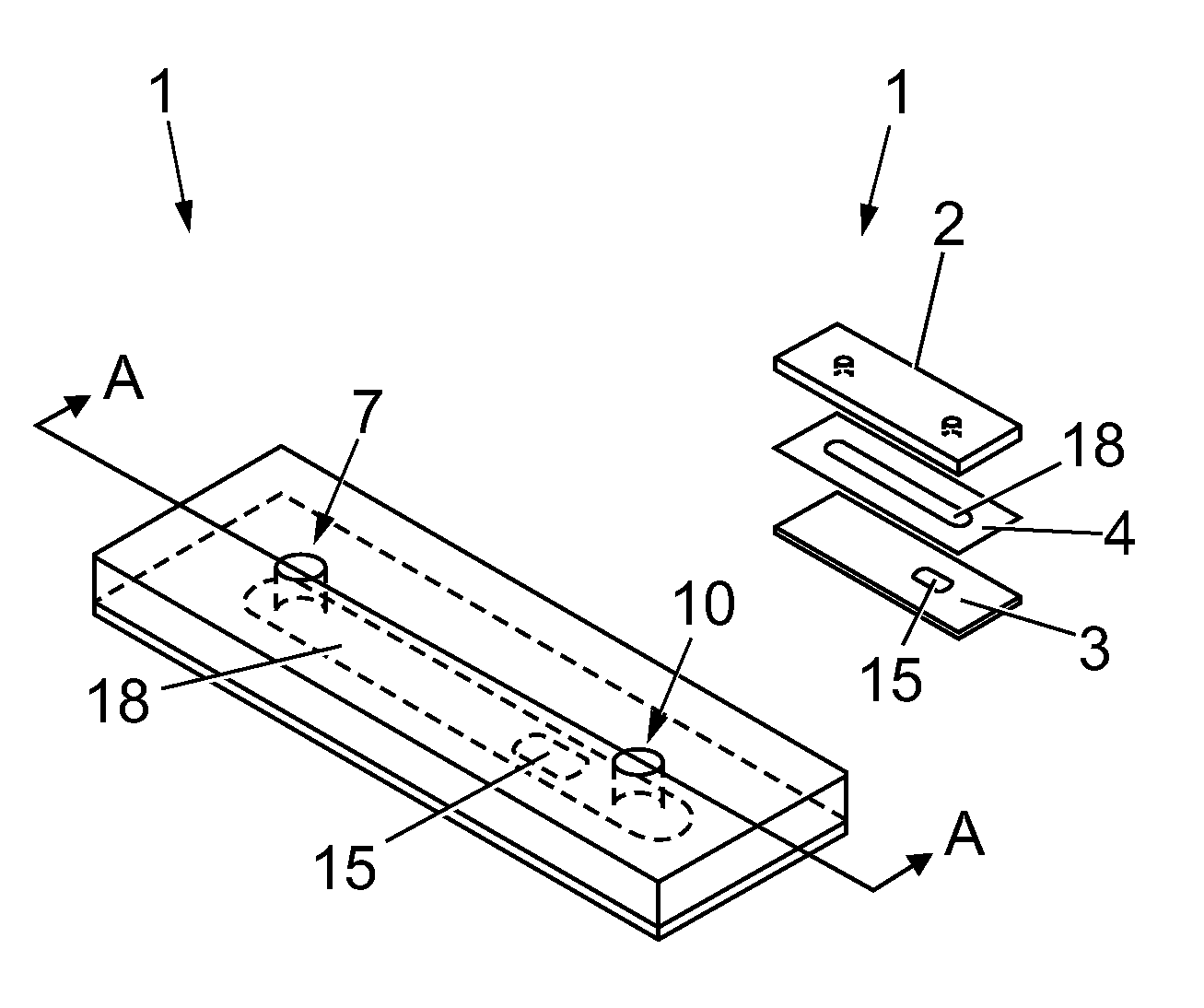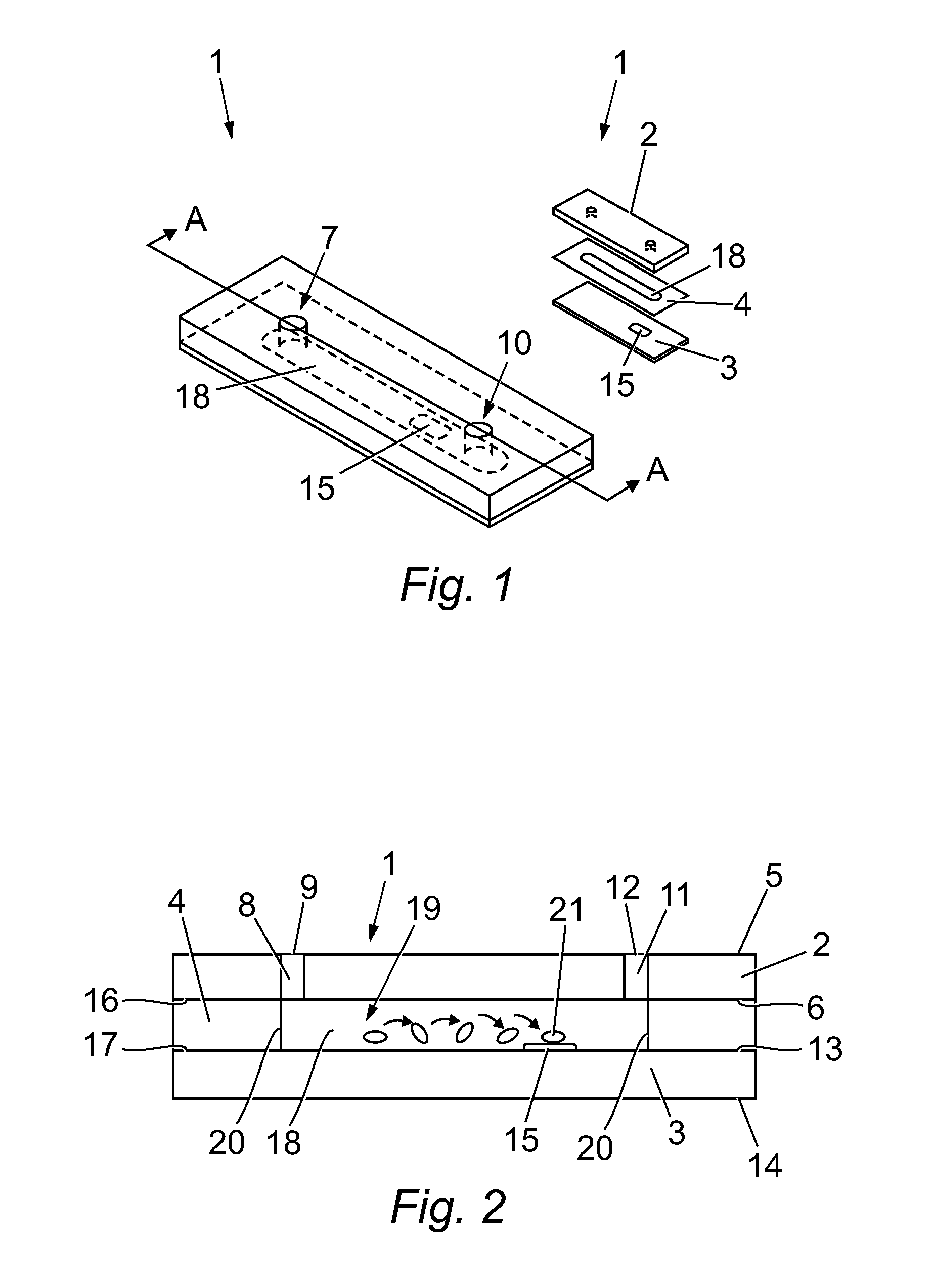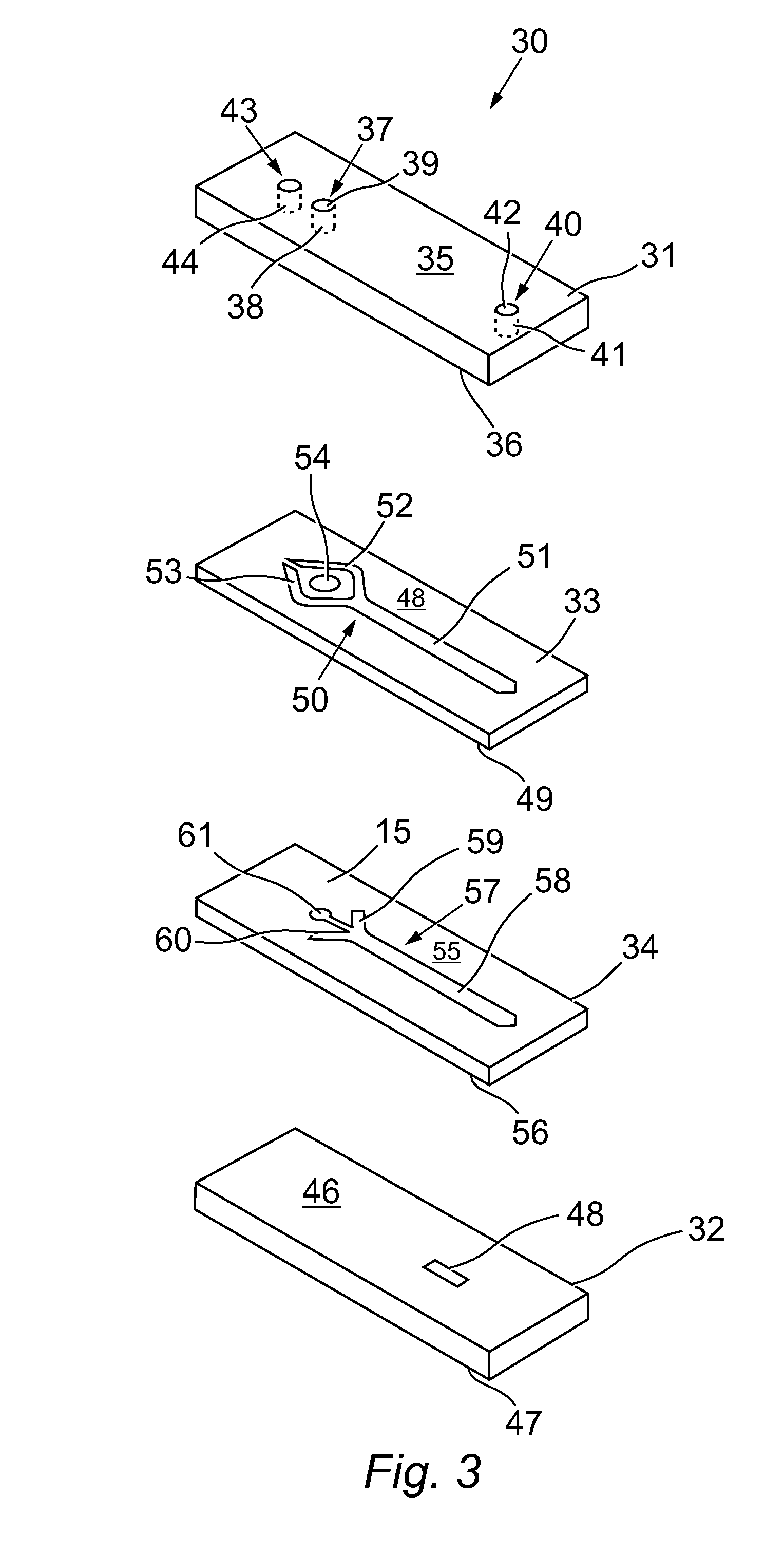Microfluidic device for assessing object/test material interactions
a microfluidic device and test material technology, applied in the field of microfluidic devices for assessing objects/test material interactions, can solve the problems of difficult to predict the individuals most likely to suffer from cardiovascular disease or cardiovascular events, remarkable paucity of information on the interaction of platelets with the vessel wall, and thrombosis of the vein
- Summary
- Abstract
- Description
- Claims
- Application Information
AI Technical Summary
Benefits of technology
Problems solved by technology
Method used
Image
Examples
example 1
Measurement of Platelet Function on Matrix Protein Von Willebrand Factor and Assessment of Treated Versus Non-Treated Blood Samples
[0279]The microfluidic device was used to measure the shear-activated response of platelets in the presence of von Willebrand Factor (vWF). In particular, the effect of platelet specific GPIIb-IIIa antagonist (abciximab, ReoPro) on platelet function was examined. Abciximab (trade name ReoPro, distributed by Eli Lilly) is a platelet aggregation inhibitor used mainly during and after coronary artery procedures to prevent platelets from sticking together, by platelet GPIIb-IIIa-mediated aggregation, and subsequent thrombus formation.
Method
[0280]Blood Draw: Blood was obtained from volunteers by venopuncture using a 19-g needle attached to a polypropylene syringe containing anticoagulant solution. Following blood draw, the blood was transferred to sterile polypropylene tubes and kept at 37° C. Suitable anticoagulants used included Direct Thrombin Inhibitors: ...
example 2
Protein Deposition by Ellipsometry
[0288]Ellipsometry has been widely used for the study of organic thin film formation and protein adsorption on surfaces. The rate of adsorption of a protein to a solid surface is determined by the concentration of protein in solution, the molecular dimensions of the protein and the properties of the substrate. In order to determine the reproducibility of the coating methodology for producing a coating of von Willenbrand factor (vWF) on glass, an ellipsometry study was conducted. The adsorption of vWF protein on silicon at the air / solid interface after drying the surface was experimentally determined. The relation between the concentration of vWF in solution and the adsorption rate was then evaluated.
Method
[0289]Substrate preparation: For the ellipsometry measurements, silicon wafers (a silicon / silicon dioxide (Si / SiO2) substrate) were used as substrates. Due to the high refractive index of silicon, measurements on these substrates are more precise t...
PUM
 Login to View More
Login to View More Abstract
Description
Claims
Application Information
 Login to View More
Login to View More - R&D
- Intellectual Property
- Life Sciences
- Materials
- Tech Scout
- Unparalleled Data Quality
- Higher Quality Content
- 60% Fewer Hallucinations
Browse by: Latest US Patents, China's latest patents, Technical Efficacy Thesaurus, Application Domain, Technology Topic, Popular Technical Reports.
© 2025 PatSnap. All rights reserved.Legal|Privacy policy|Modern Slavery Act Transparency Statement|Sitemap|About US| Contact US: help@patsnap.com



